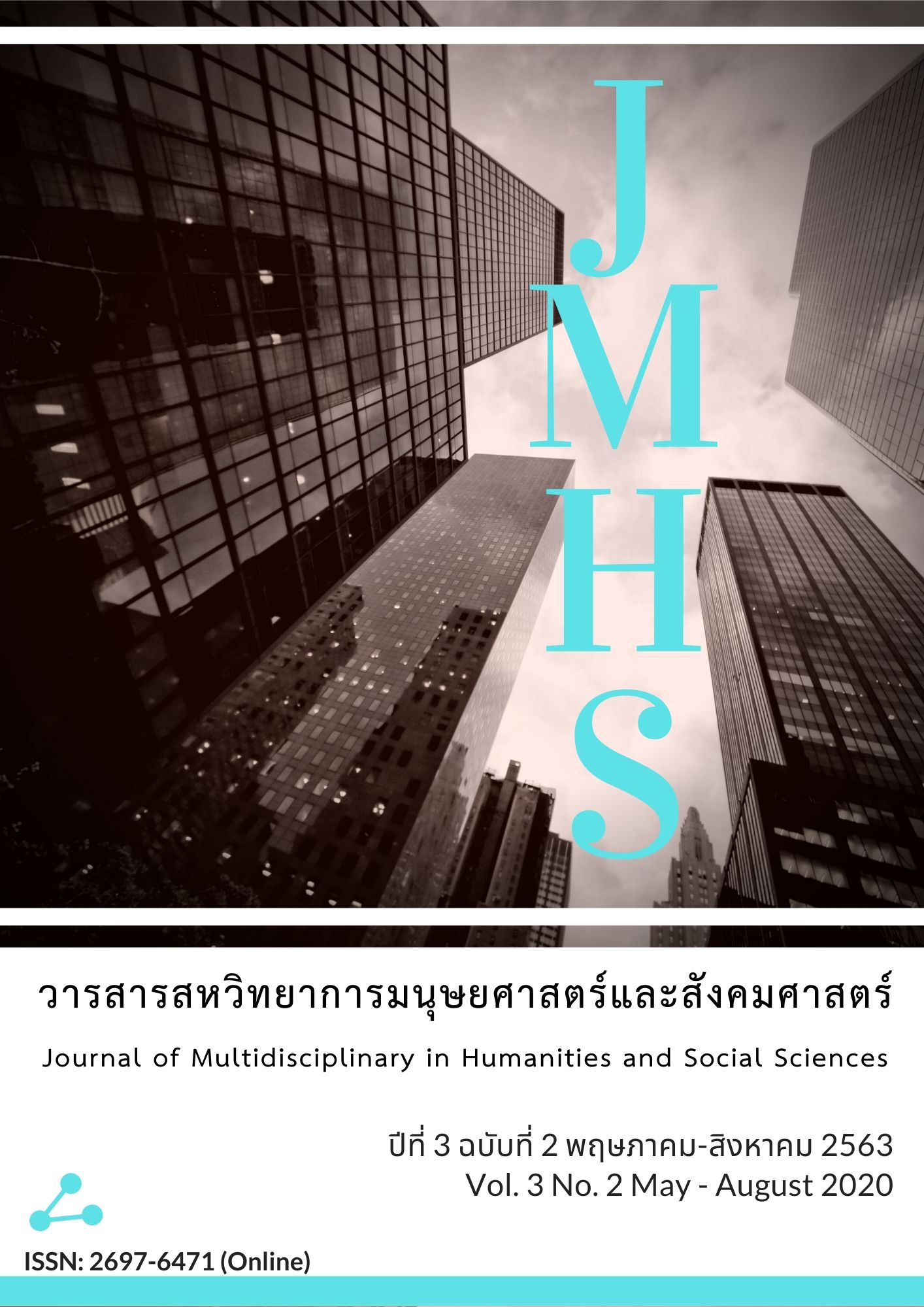A Relationship between Personal Factors of Teachers and Educational Personnel and Recognition of Schools’ Marketing Communication Channels
Main Article Content
Abstract
This Article aimed to study (1) To study the relationship between the personal factors of teachers and educational personnel and the perceived marketing communication channels of the school (2) In order for the school to be able to use the information as a guideline for the development of content and the selection of marketing communication channels that are suitable for the perception of teachers and educational personnel. (3) To promote teachers and educational personnel knowledge Understanding of what the school wants to communicate with external audiences And able to publicize information or be an agent in communicating the marketing and image of the school more accurately and efficiently. The sample was questionnaire was used to collect data from 412 participants from 170 schools in Thailand. The questionnaire responses were analyzed using frequency, percentage, and a chi-square test. The research results were found as follows;
1. The study found that out of 17 marketing channels mentioned, 5 main channels were found notably common which were 1) Facebook 2) website 3) brochure 4) Line and 5) poster in order.
2. As for personal factors, gender age and educational level did not have any effects on recognition of brochure, Line, and poster.
3. While, age influenced the recognition of Facebook and website and educational level influenced the recognition of website as marketing channels.
Knowledge / Findings from this research Currently, Facebook will be a very popular channel. Schools should not neglect to update the information on the school website to be accurate and have movement that is always associated with Facebook. All media should be designed to be in the same direction in order to be a clear identity of the school.
Article Details
Views and opinions appearing in the Journal it is the responsibility of the author of the article, and does not constitute the view and responsibility of the editorial team.
References
ขวัญฤดี ฮวดหุ่น. (2560). อิทธิพลของแอพพลิเคชั่นไลน์ในการสื่อสารยุคปัจจุบัน, วารสารศิลปการจัดการ, 1(2), 75-88.
บุบผา เมฆศรีทองคา และขจรจิต บุนนาค. (2557). พฤติกรรมการบริโภคข่าวผ่านสื่อเฟซบุ๊คของคนต่างวัยในสังคมไทย. วารสารบัณฑิตศึกษา มหาวิทยาลัยราชภัฏวไลยอลงกรณ์ในพระบรมราชูปถัมภ์, 8(3), 230-247).
พันศักดิ์ อุดหนุน. (2561). กลยุทธ์การสื่อสารการตลาดดิจิทัลที่ส่งผลต่อภาพลักษณ์โรงเรียนเอกชนในเขตพื้นที่ระเบียงเศรษฐกิจพิเศษภาคตะวันออก(วิทยานิพนธ์มหาบัณฑิต). สถาบันการจัดการปัญญาภิวัฒน์.
อดิพล เอื้อจรัสพันธุ์. (2561). พฤติกรรมการใช้สื่อของกลุ่มเจ็นเนอเรชั่นเอ็กซ์และเจ็นเนอเรชั่น วาย. วารสารวิชาการนวัตกรรมสื่อสารสังคม, 6(1), 59-65.
Blakeman, R. (2014). Nontraditional Media in Marketing and Advertising. London: Sage Publishing.
King, C., & Grace, D. (2010). Building and Measuring Employee-Based Brand Equity. European Journal Of Marketing, 44, 938–71.
Chaffey, D. And Smith, P. (2013). E-Marketing Excellence. London: Routledge.
Dayton, K. (2016). The Comparison Of Effectiveness Between Print Media & Electronic Media In Terms Of Promotion And Recruitment(Thesis). Western Michigan University.
Dechernatony, L., & Cottam, S. (2006). Internal Brand Factors Driving Successful Financial Services Brands. European Journal of Marketing, 40, 611–33.
Ellis, N. (2011). Business-To-Business Marketing. Oxford: Oxford University Press.
Getz, D. (2012). Event Studies: Theory, Research And Policy For Planned Events. (2Nd Ed.). Uk: Routledge.
Gibson, A. & Nielsen, M. (2000). Tourism and Hospitality Marketing In Ireland. Dublin: Gill & Macmillan.
Glynn, M. W., & Miles, S. J. (2007). The Employee Brand: Is Yours An All-Star?. Business Horizons 50, 423–33.
Jenkins, H. (2006). Convergence Culture: Where Old and New Media Collide. New York: New York University.
Kotler, P. And Gertner, D. (2002). Country as Brand, Product, And Beyond: A Place Marketing And Brand Management Perspective. J Brand Management, 9(4), 249-261.
Musingafi, M., Zebron, S., Chimbwanda, F., & Chaminuka, L. (2014) Applying The Marketing Concept To School Management In Zimbabwe. Journal Of Education And Practice, 5(39), 25- 28.
Perreault, W., Cannon, J. & Mccarthy, E. (2013). Basic Marketing. 19Th Ed. New York: Mcgraw Hill Higher Education.
Rico, P., Hanisch, S., & Burmann, C. (2015). Internal Branding: Relevance, Management And Challenges. Marketing Review St. Gallen 32, 52–61.
Smith, K., Todd, M. And Waldman, J. (2009). Doing Your Undergraduate Social Science Dissertation. London: Routledge.


